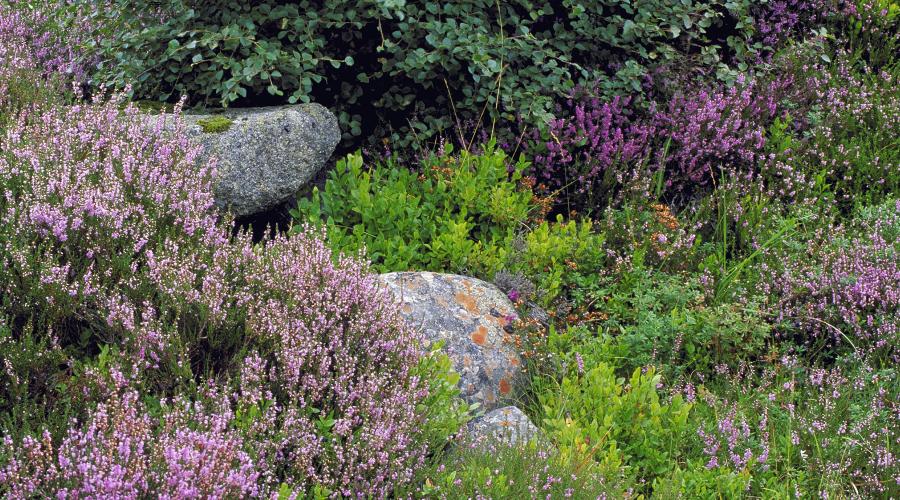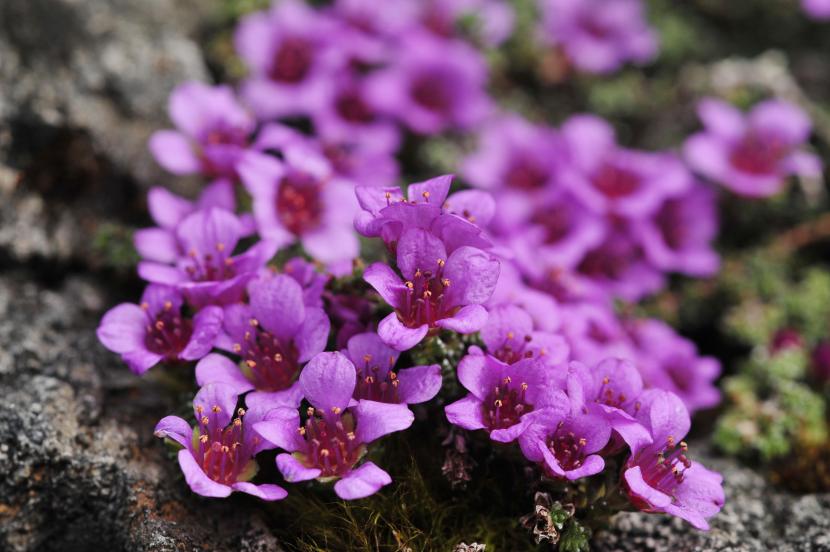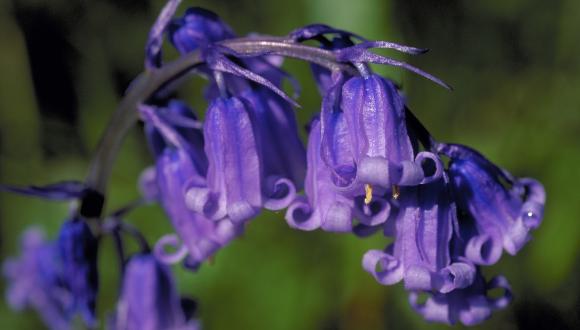
Mountain, heath and bog plants
Some plants that were widespread after the last ice age can still be found living on the crags, cliffs and summits of our Scottish peaks.
Many mountain and heath plants have retreated to the Arctic or to high mountain ranges in Scandinavia or the Alps. But some still live precariously on the crags and cliffs or summit ground of our Scottish peaks.
Cliffs
Grazing animals on our hills have removed some of the more palatable species from accessible ground. But on the best cliffs, you can still find natural hanging gardens of rare and beautiful plants.
Climbers and hikers can look out for species like the globeflower (Trollius europeaus) and Alpine blue-sow-thistle (Cicerbita alpina).
Heathland on the slopes
Constant grazing of seedlings has caused woodland to disappear from many of our lower slopes. But, in its place, heathland species have flourished – most famously, heather or ling (Calluna vulgaris). Slopes are now bathed in purple when the heather flowers in August.
Muirburn is used to increase the number of red grouse for shooting and, in combination with grazing pressure, prevents trees from becoming established.
Heaths of the high tops
The tops of the tallest hills are unsuited to woodland. Habitats found at summits are among the least modified in Scotland.
Look out for the:
- tiny three-leaved rush (Juncus trifidus) – which can survive the hardest frosts
- purple saxifrage (Saxifrage oppositifolia) – which may bloom as early as March
For such plants, the appearance of grasses from milder zones is the greatest threat from our changing climate.

©Lorne Gill.
Snow blanket
Many mountain plants only live in such places because they can tolerate cold or extreme exposure.
Some are relatively frost-sensitive and can only survive where snow builds up in winter to insulate them from the hardest frosts. Climate change is likely to reduce our snow cover, putting these plants at risk from winter frosts in future.
Plants at risk include the blue heath (Phyllodoce caerulea), found in Scotland only in the mid-season snow beds at Drumochter and on Ben Alder. Snow here used to melt as late as early June.
Bogs
Blanket bog covers the gentler slopes of many hills and mountains. Only a small number of flowering plants do well in the constantly waterlogged conditions, cut off from soils, rocks and other nutrient sources by peat layers.
Plants found in blanket bog include:
- hare’s-tail cottongrass – tussocks build up over time
- heather, cross-leaved heath and crowberry – widespread in all but the wettest areas
- cloudberry and dwarf cornel – upland peatland specialists that rarely occur in other habitats
Few woody species or trees can tolerate the permanently wet conditions, but the tiny dwarf birch grows on blanket peat where burning doesn’t take place and grazing levels are low.
Protection of mountain, heath and bog plants
Discover how Scotland’s wild plants and fungi are protected.





